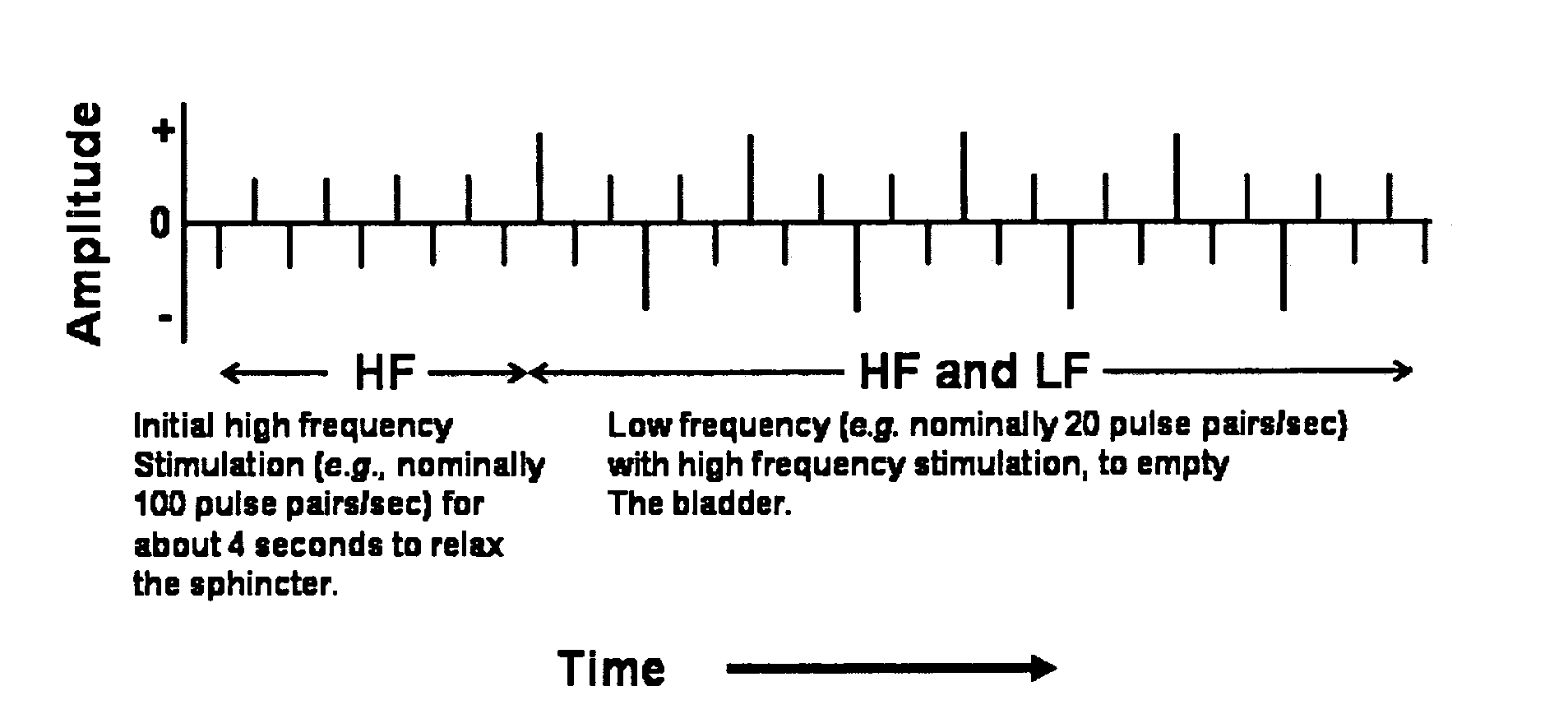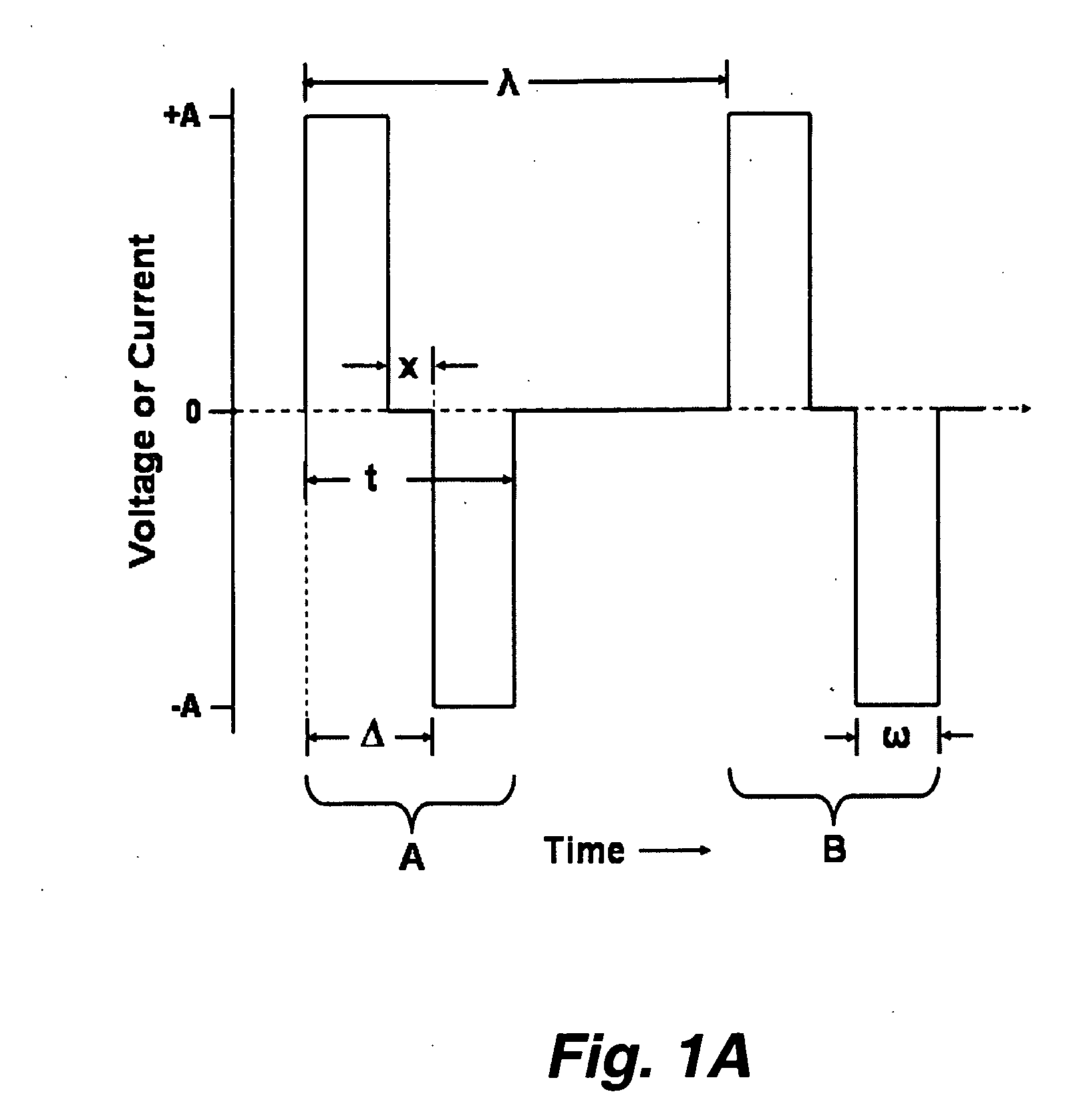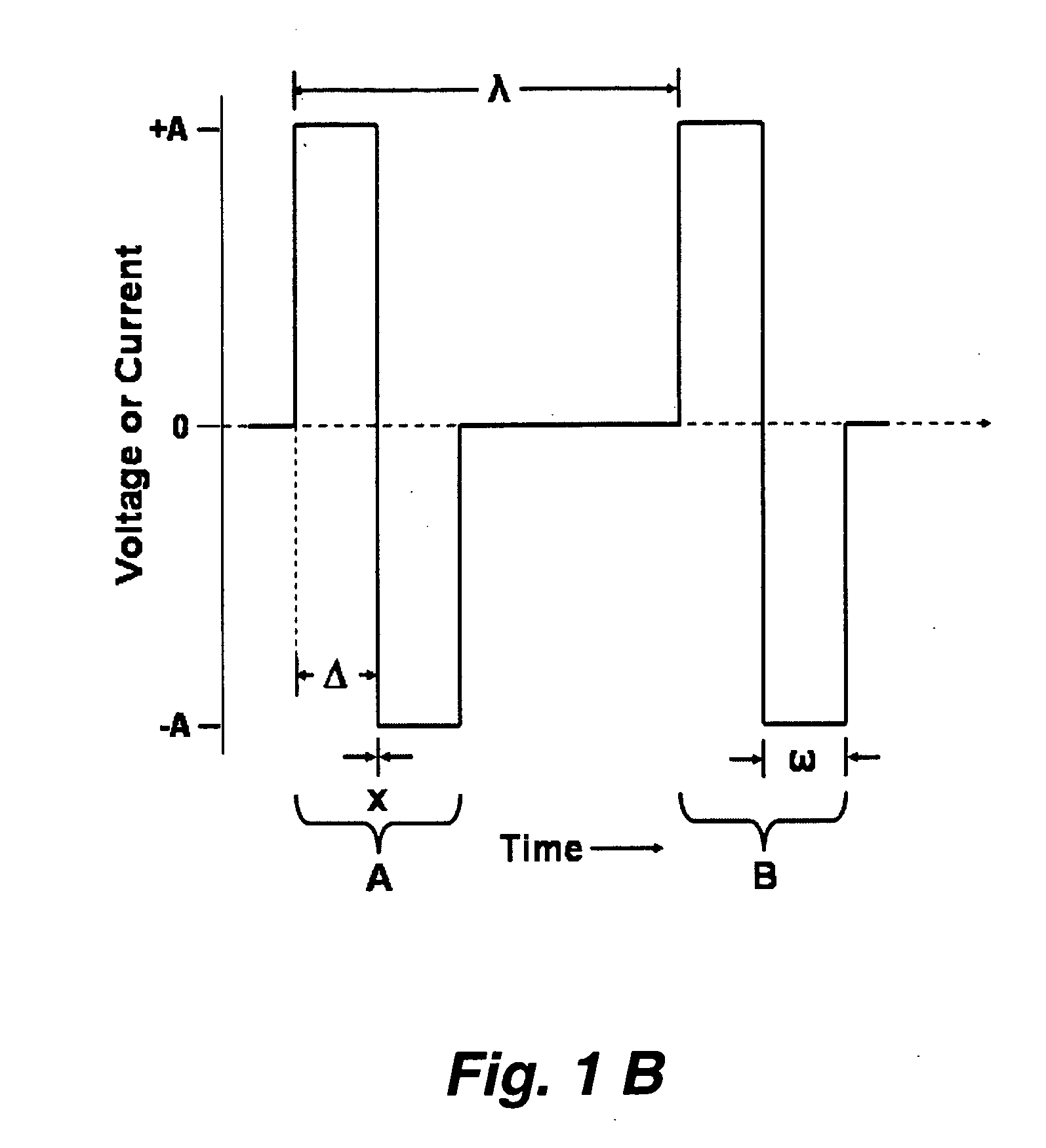Methods and systems for selective control of bladder function
a selective control and bladder technology, applied in the field of neural transmission regulation, can solve the problems of involuntary bowel control, drawbacks well known to medical professionals,
- Summary
- Abstract
- Description
- Claims
- Application Information
AI Technical Summary
Benefits of technology
Problems solved by technology
Method used
Image
Examples
example 1
Means and Device for Selective Activation of Small Fibers in a Mixed Nerve
[0171] The purpose of this experiment was to investigate the use of electrical stimuli to selectively stimulate small diameter fibers to the exclusion of stimulating the larger fibers. The general idea was to use high frequency sinusoidal current or voltage to disable the larger fibers, thus producing flaccid paralysis of the skeletal sphincter muscles. Then the application of low frequency sinusoidal current or voltage excites the small diameter fibers that contract the detrusor muscles.
[0172] The sinusoidal wave form, while effective in blocking the generation of the impulse in nerve fibers was not an efficient form of energy. Since energy (power) must be conserved when an implantable stimulating device is powered by a battery, the most efficient form of stimulus energy is important.
[0173] A device was designed and built that allowed comparison of the effects of the sinusoidal wave with an alternated phas...
example 2
Means and Device for Producing Selective Nerve Blockade
[0179] In this example we demonstrated that alternate phase pulses of equal amplitude can block the generation and transmission of impulses in nerve fibers. These high frequency, relatively low amplitude (current or voltage) alternate phase pulses can act on the large fibers to flaccidly paralyze skeletal muscles. Higher amplitude pulses are able to produce blockage in small fibers, for example, of the autonomic system. The block is applicable to both afferent and efferent fibers and can be used, for example to block the fibers used in proprioception, pain, and temperature..
[0180] During an acute experiment with a canine model, it was demonstrated that high frequency alternate phase pulses applied to sacral nerve roots could produce flaccid paralysis in skeletal muscles. The goal of the experiment was to demonstrate that low amplitude, high frequency sinusoidal currents that are applied to specific sacral roots could reduce th...
PUM
 Login to View More
Login to View More Abstract
Description
Claims
Application Information
 Login to View More
Login to View More - R&D
- Intellectual Property
- Life Sciences
- Materials
- Tech Scout
- Unparalleled Data Quality
- Higher Quality Content
- 60% Fewer Hallucinations
Browse by: Latest US Patents, China's latest patents, Technical Efficacy Thesaurus, Application Domain, Technology Topic, Popular Technical Reports.
© 2025 PatSnap. All rights reserved.Legal|Privacy policy|Modern Slavery Act Transparency Statement|Sitemap|About US| Contact US: help@patsnap.com



